10 Worst Aircraft. On December 17th, 1903, the Wright Brothers made history when they carried out the first successful flight of a “Heavier-than-air-aircraft” near the Town of Kitty Hawk, North Carolina. The aircraft flew a distance of only 120 feet and only lasted about 12 seconds, but the event has gone down as one of the most important moments in human history. Since that faithful December on the beach, the new field of Aviation Technology made great leaps and bounds and a surprising rate.
In 1939 the first jet powered aircraft took flight in the form of the Heinkel He- 178, while by 1952 planes were now crossing the Atlantic with passengers with ease. In 1969, the world was introduced to supersonic travel when the Anglo-French Concorde first took to the skies. In the same year, Boeing cemented itself as the king of passenger jets, when they revealed the monstrous 747 Jumbo Jet. It is very clear to see that humanity as a whole has come a long way since the Wright Brother at Kitty Hawk and while the civilian airline industry has made some great advancements, so has the military aircraft industry.
Aircraft such as the F-86 Saber, MiG-15, MiG-21 and C-130 Hercules have all cemented their place in history as being amongst the best aircraft ever built. But for every success story, there is a list of aircraft that really could not do the job their were designed for. Usually designers and governments are smart enough to kill a project and move on to better things, but sadly this is not always the case. For some reason or another, an aircraft that has no business entering service, enters service and the results usually turn deadly.
Now for this list, I am only gonna do aircraft that not only made it into production, but entered service as well. Also, only military aircraft will be on this list, so with that said lets get started…..
1) Brewster F2A “Buffalo”

How did this plane beat out the F4F Wildcat, I will never know! Designed and built by the Brewster Aircraft Corporation for the U.S. Navy, the Buffalo does have the distinction of being the first American monoplane to be fitted with an arrestor hook for carrier operations. The aircraft is also the first monoplane fighter to be operated by the U.S. Navy, replacing the older Grumman F3F Biplane.
Power came from a Wright R-1820 Cyclone engine which gave the Buffalo a top speed of 321 mph and an operational range of 965 miles and 4 x .50 cal machine guns gave the fighter its bite. But the Buffalo was obsolete by the time it entered service and when WW2 erupted, the fighter was really no match for the German and Japanese Air Forces. In Malaya and the Dutch East Indies, British and Dutch F2As proved to be no match for the Japanese built Nakajima Ki-43 “Oscar” and Mitsubishi A6M “Zero” fighters. Some air crews even ended up loading less fuel and ammunition so as to keep up with the Japanese fighters, though i made little difference.
In short order, the Brewster Buffalo was universally hated by all the allied air forces that operated it and although they did have some success in the Pacific, the aircraft was eventually removed from front line service. Replaced with the F4F Wildcat and other, better allied fighters. But while the allies had no love for the Buffalo, the Finnish Air Force loved the little fighter and used them to great effect during their war with the Soviets.
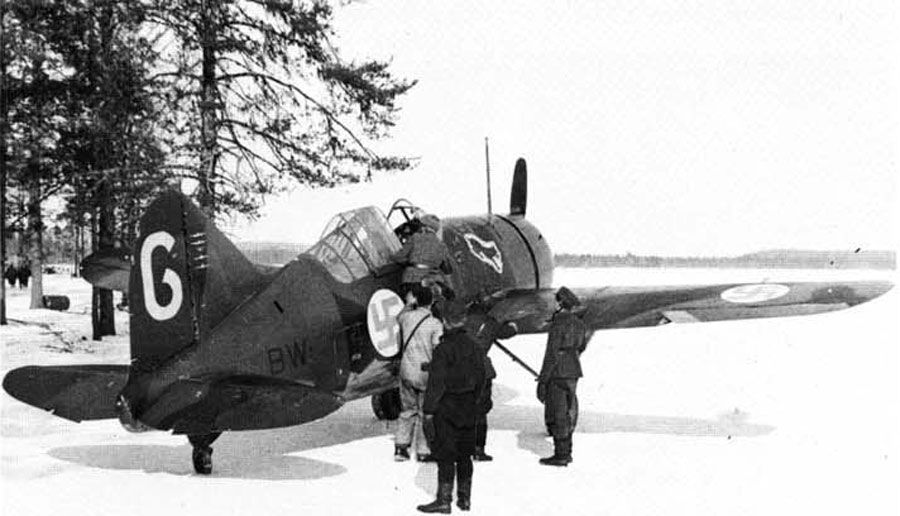
Many aces in the Finnish Air Force flew Buffalos (36 in total) as their primary fighter until Finland acquired German built Bf-109Gs in 1943. so the Buffalo did have its moment to shine. But then again, the Soviet fighters it went went up against were no better.
Speaking of which….
-
Lavochkin-Gorbunov-Gudkov LaGG-3

Would you believe this was the most “advanced” fighter the Soviets had when the Germans invaded in 1941? Now you know why there were so many aces on the Eastern Front and in Finland. Despite being made from wood, this fighter was anything but but effectve. Disappointing climb rate, poor built quality, sluggish acceleration (if you could even call it that), made the LaGG-3 nothing more than easy targets for German and Finnish pilots. It also did not help that despite being made from wood, the aircraft was overweight and the engine that was eventually used to power the fighter, was not one that was originally designed for it.
The Klimov M-105 engine that was used for the aircraft was terribly unsuited for the air frame and was incredibly under powered as a result. Klimov had originally planned to develop a more powerful VK-106 engine, but issues with cooling forced the designers to use the M-105. This decision more or less sealed the fate for many Soviet pilots who were unfortunate to fly this aircraft in combat. Needless to say, the LaGG-3 was very unpopular with its pilots who gave it the ominous nick name, “Lakirovanny Garantirovanny Grob” (“varnished guaranteed coffin”) If there is anything good that came out of the LaGG-3, was that it was eventually developed into the LaGG-5.
3) Blackburn Beverly
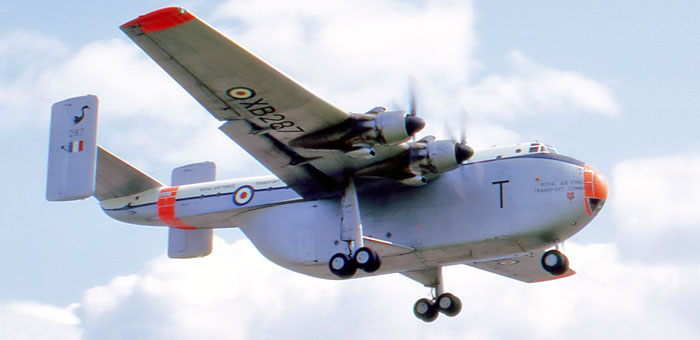
The Beverly Hell-billy. Developed for the British Royal Air Force Transport Command, the Beverly came into service just one year before the American C-130 Hercules. But between the two, only one would go one to become an aviation legend, while the other…. would be largely forgotten by history. The Beverly was a high-wing cantilever monoplane with a fixed undercarriage, with a fuselage which had a tail boom fitted with a tailplane with twin fins. A tail boom which was large enough to accommodate 36 extra passengers, apart from the 94 with it could already carry.
Power came from 4 x Bristol Centaurus 173 radial engines (The same used on the magnificent Sea Fury) each one cranking out over 2800 horse power each. This gave the Beverly a top speed of 238 mph and a range of 1300 miles at 173 miles per hour. The Centaurus Engines even had reverse pitch, which gave the aircraft the ability to reverse under its own power. But the Beverly was an obsolete aircraft by the time it entered service in 1955, as a lot of the technology used in the aircraft came from WW2. The four Centaurus engines had a combined output of 11,400 horse power which pulled an aircraft weighing 135,000 lbs. By comparison, the C-130A 4 x turbo prop engines had an output of 15,000 hp which pulled an aircraft that weighed 10,000 pounds less.
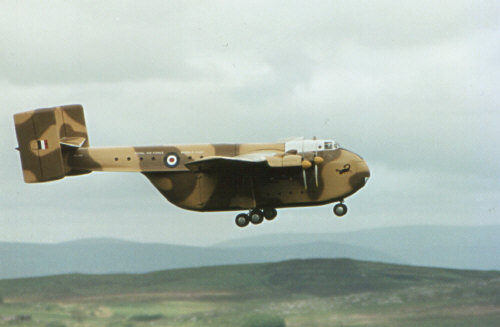
Now it must be pointed out that Britain did have Turbo prop technology in the fifties and had even produced one of the first successful Turbo prop aircraft in the form of the Vickers Viscount. But the decision to give the Beverly WW11 era piston engines gave the aircraft performance that was mediocre at best. In the end, the Beverly was only in service for a scant 12 years, before being replaced.
4) Messerschmitt Me 163 Komet
An interesting idea that was horrid in execution. Designed started under the aegis of the Deutsche Forschungsanstalt für Segelflug study into sail plane flight, the Me-163 has the distinction of being the world’s first (And Only) rocket powered interceptor aircraft. First taking flight in secret in 1941, the Komet was powered by a Helmut Walter Kiel Kommandogesellschaft HWK 109-509A-2 bi-propellant liquid-fueled rocket motor. Giving it a top speed of 559 mph and a maximum altitude of 12,000 meters.
But the Komet was a death trap. The plan for the aircraft was that it would rocket into the air and intercept high flying American bombers, where it would have to make at least two passes against the enemy formations before gliding back to earth. The problem with this was that once in a glide, the Komet was absolutely helpless and at the complete mercy of any allied escort fighters. But the fighters were the least of the Komet pilot’s worries, as the rocket fighter would actually explode if it suffered a rough landing. This was due to the presence of fumes which still existed within the tanks even after the fuel was expended. In the end, more pilots actually died in training and landing, than they did in combat.
5) Gloster Javelin
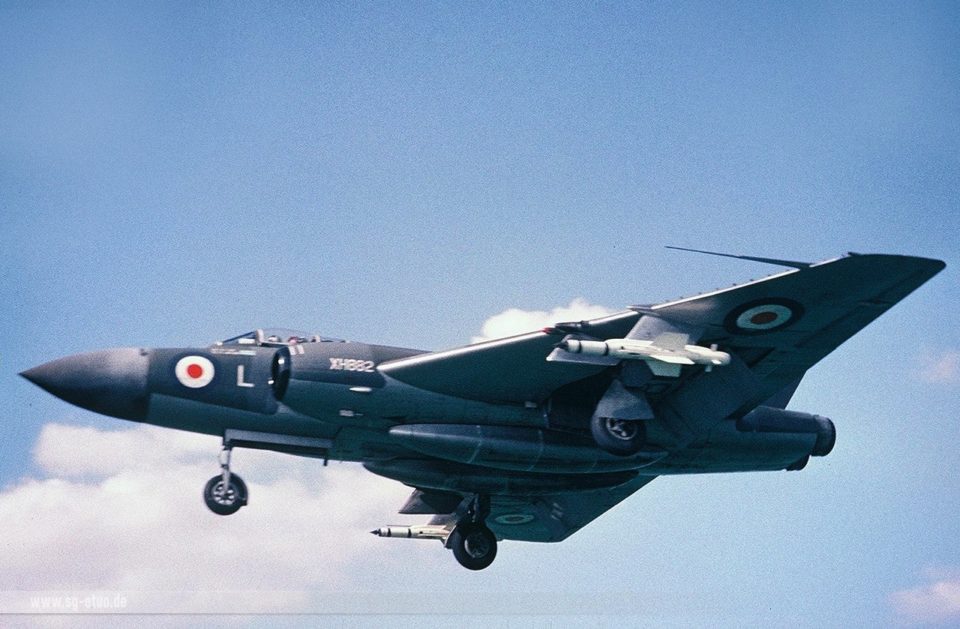
How do you make a plane -One that has an engine with one of the highest thrust-to-weight ratios of its generation- subsonic- is beyond me. But that is what happened with the Gloster Javelin. How bad was this plane? The Convair F-102 Dagger (Which was also rather dreadful) would have been able to fly circles around it. At least it could go super sonic.
This is a twin-engine, T-Tailed all weather interceptor entered service with the Royal Air Force in 1956 and despite a number of apparent engine and system upgrades, the Javelin was still a bit of a joke. With a top speed of just 710 mph, it was very clear to see that their was no way in hell it could ever intercept anything at all. Mercifully, the Javelin was replaced by the superior English Electric Lighting in 1968.
6) Sukhoi Su-7 “Fitter”
‘The Su-7 was a totally bloody useless aircraft. It had a feeble bomb load and ineffective rockets only. The only Sukhoi that really showed an improvement over the MiG-17 was the Su-20, which we received only years later.’ ~ Gabr Ali Gabr , Egyptian Air Force
That alone should tell you just how much the Arabs “loved” this Soviet fighter. The Su-7 was born out of the Soviet’s sudden need for an aircraft which could be used for ground attacks and close air support. Now although the USSR would end up developing the Su-25 Frogfoot, their first attempt, the Su-7, was not so great. Originally designed as a low level dogfighter, the Su-7 was a rugged and simple aircraft, but it had a lot of shortcomings and the Arabs were not impressed.
In the 1960s, the USSR exported a number of these aircraft to the Arab state for use in their war with Israel and it was not long before these air forces found problems with the aircraft. Though fast, the Su-7 lacked the range needed to carryout long rage attacks within enemy territory. Nor did it have the fuel capacity to linger above areas where it was needed. A fact which kinda made it unsuited for the role of close air support.

The massive yet powerful Lyulka AL-7F1 turbojet took up so much space that there was little room left for fuel tanks. It did not help either that the Su-7 could not even accelerate faster than 600 km/h when loaded down with bombs, a fact which the Israeli Air Force exploited to great effect. The aircraft also was vulnerable to foreign object damage and was without the ability to carry air-to-air missiles, therefore unable to protect itself other than with its two NR-30 cannon. Even then Arab pilots would have worry about using up their fuel if they were forced into a dogfight Israeli Mirages, which did carry missiles most of the times.
Now it must be noted that the Mirages the Israeli’s used were not exactly dogfighters, as the french made aircraft were designed to be interceptors. But despite this fact, Israeli pilots usually came out on top when facing the Fitter, something many Egyptian pilots can attest to.
7) Yokosuka MXY-7 Ohka
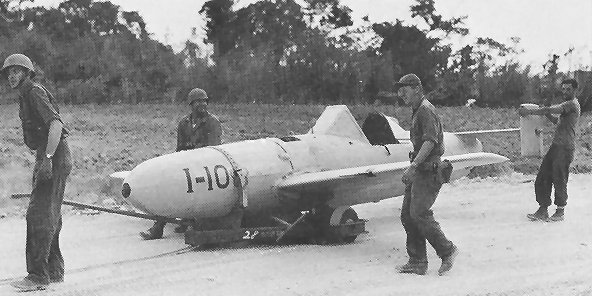
Do I really need to say just how bad an idea this “aircraft” was? This was nothing more that a rocket powered bomb that had a human guidance system. Developed for use by the Imperial Japanese Navy Air Service, the Ohka (Cherry Blossom) came about as Japan was starting to lose the war as the allies had begun to push them back to the home islands.
By now Japan had begun to use the infamous Kamikaze against allied naval vessels, but many aircraft were being shot down before they could even reach the allied fleets. The Ohka was to solve this problem, as it would be powered by 3 × Type 4 Mark 1 Model 20 rocket motors that would give it a top speed of 576 mph. Much faster than most allied fighters and too fast for anti-aircraft gun crews to get a lead on it. The down side though was that the Ohka would need to be transported by slow moving “Betty” bombers, which were easily detected by allied Radar and were usually intercepted before they could launch the Ohka.
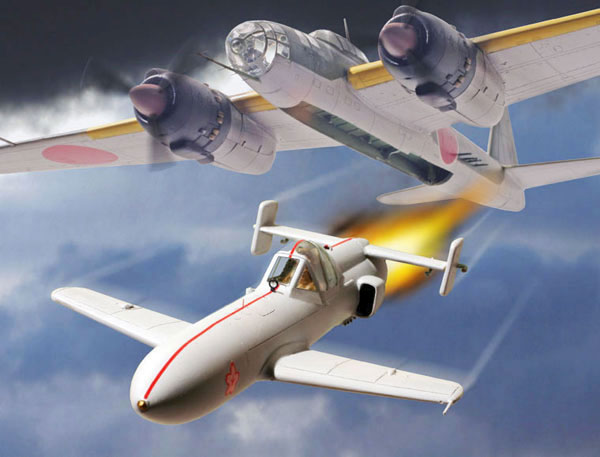
In the end, the Ohka didn’t really do all that well in combat, though a small number of vessels were damaged by the flying bomb. But in a way it did make the allies think twice about invading the Japanese mainland. But unfortunately the Japanese had no way of knowing that the American’s Plan B for victory would result in the only use of nuclear weapons in combat.
8) Lockheed F-104 “Starfighter”
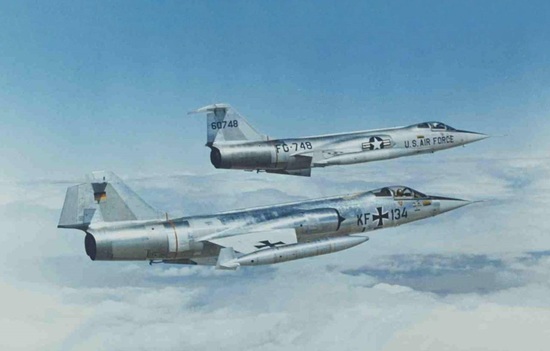
First taking flight in 1956, the Starfighter was a part of the Century Series of aircraft that had been developed for the U.S.A.F. . Designed in part by the Legendary “Kelly” Johnson, the F-104 did set numerous world records, including both airspeed and altitude records when first introduced. But the Starfighter was a Widow Maker.
Though it did have some impressive climb performance even by today’s standards and could reach Mach 2, the single General Electric J79 afterburning turbojet that powered the plane was not the most reliable. As it was prone to afterburner blowout during takeoff, something that caused some early accidents. During its service with the U.S. And other allied nations, the Starfighter became most infamous for the numerous (usually fatal) accidents they were involved in, rather than in combat. Even then, their combat history was abysmal at best.
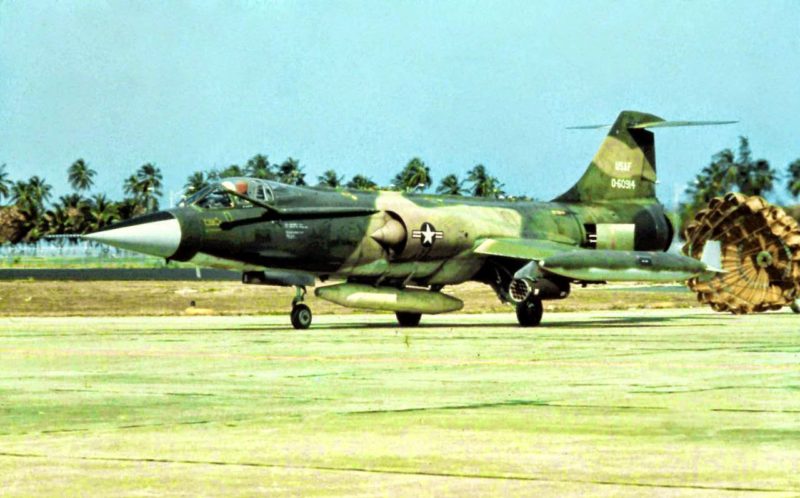
Over 20+ starfighters were lost during the Vietnam War in accidents and combat missions, never scoring a single air to air victory. The Pakistani Air Force did claim at least 2 kills with their F-104s against an Indian Air Force Dassault Mystère IV fighter at the start of the Indo-Pakistani war of 1965, but lost a total of 4 aircraft in 1971, all against Soviet Supplied MiG-21s.
But what really hurt the Starfighter’s reputation, was that Lockheed had actually bribed a number of high ranking officials from other allied nations to select their fighter over other designs. An act which resulted with nations trying to adapt the super sonic interceptor into roles it was never designed for. Resulting in numerous fatal accidents during its service history.
9) Spad S.A.

Though the French haven’t made that many bad aircraft, they are not completely innocent. Case in point, the Spad S.A., which came about response to the problem of firing a machine gun through the airscrew arc of a conventional tractor aircraft. Basically, the was a wooden box that was placed in front of a turning propeller blade where some poor soul would be forced to sit and man a machine gun, while a pilot would sit in a cockpit behind the engine.
As you can guess, this arrangement was not that popular with air crew. As the gunner’s position was prone to extreme vibration and on several occasions, actually detached from the rest of the aircraft. Communication between the gunner and pilot was next to impossible, and in the event of the aircraft tipping onto its nose….. well it didn’t end well for the gunner, at all. Funny enough, the aircraft was unloaded onto the Russians during WW1, who hated the aircraft just as much and the type was soundly removed from service.
10) Mikoyan-Gurevich MiG-23MS
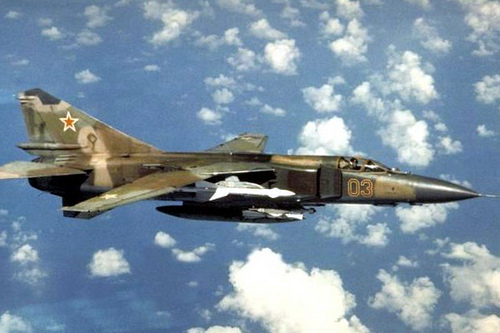
Not all MiGs are winners…. The MiG-23 Flogger is kind of the black sheep of the MiG family. While aircraft like the MiG-21, 17 and even the 25 get all the attention, the Flogger is seen as a bit of a disappointment. Originally developed as an answer to larger American fighters like the F-4, the Flogger was meant to be a replacement for the venerable MiG-21 and a lot of people were excited with the idea of a new, advanced MiG fighter. But they were grossly disappointed with what they got.
Now while the Soviets were known to export low quality equipment to allied nations, the MiG-23 MS was by far one of the most evil exports the Soviets ever made. Due to delays in missile development, the Flogger was only available with K-13 air-to-air missiles, which was as reliable as the early American Sidewinder missiles. ( If you did not know, the early sidewinders were rubbish). They came with the basic S-21 weapon system which did not match up at all with what the aircraft was supposed to do. It was faster than a MiG-21, but nowhere near as maneuverable or as safe to fly. It was only safe when flown in a straight line.

Problems extended to the maintenance of the aircraft, as the Khatchaturov R-35-300 engine was prone to burning out and access to replacement parts were only possible if you were still in good graces with Moscow. Egyptian and Syrian Floggers learned this the hard way and were not match for the Israeli F-4s when they came to blows in the 70s and many Eastern European nations opted to keep their MiG-21s rather than acquire the dreadful Flogger. A fact still seen today as many countries still operate the MiG21.
Now although the 23 would be developed into the superior MiG-27, the MiG-23 will always be known as being one of the worst MiGs to ever enter service.










